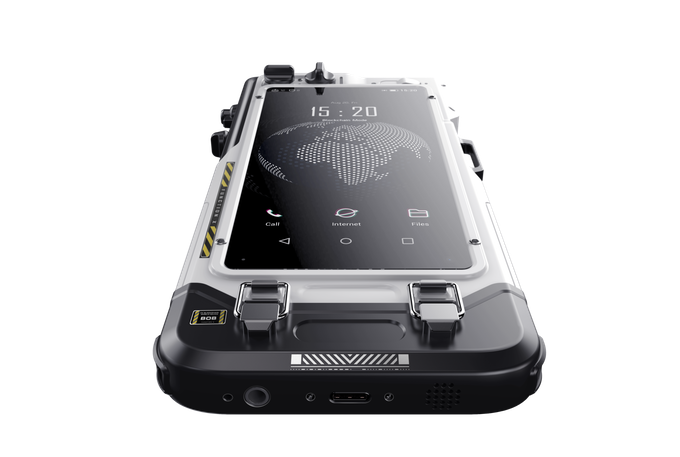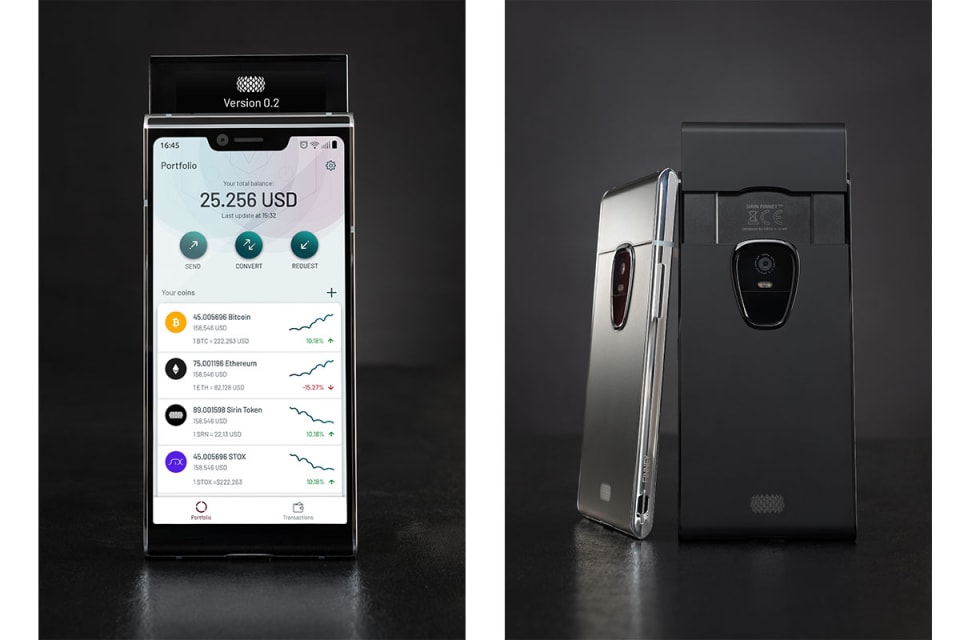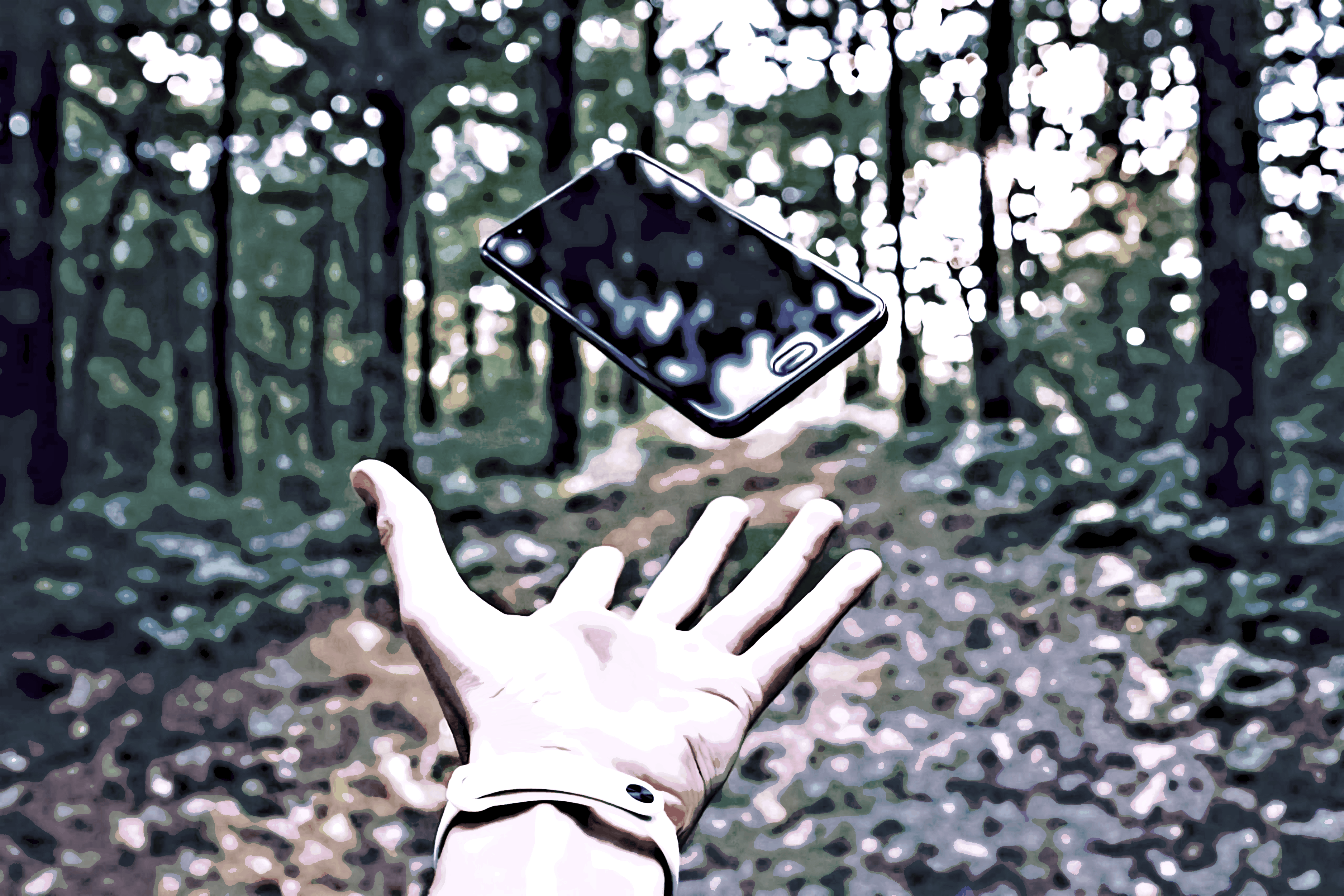The annual Consumer Electronics Show (CES) in Las Vegas is known as the world’s biggest convention for the electronics industry. But for all the glitter of the Las Vegas strip and beautiful models showcasing the latest gadgets from the world’s leading brands, there’s also an underside: in plain view are plenty of knockoffs and devices with dubious prospects. At this year’s CES, blockchain phones took this mantle.
In some ways, the trend of companies putting blockchain in their name as a marketing ploy is back with these devices, as little-known startups and hardware manufacturers strive to differentiate themselves from the crowd. Blockchain phones still aren’t a major category by any means; every year there are only two or three that pop up. But for such a niche category, the disproportionate amount of attention they get reveals the incentive to slapping the blockchain label on a phone that’s otherwise technically more or less the same as the others.
To be sure, blockchain phones in principle aren’t a ludicrous or absurd concept. If done properly, with proper hardware integration, they have potential — though a more accurate name might be cryptographic phones. What makes a true blockchain phone unique is the ability for cryptographic keys to be securely stored on the device: not in the cloud, not on the phone, but rather in a secure part of the processor that can’t be accessed by simply anything. This is the same restricted area that the data for fingerprint logins or facial recognition is also stored.
As explored in a prior installment of this special three-part Forkast.News series, HTC and Samsung are two companies with blockchain phones on the market that are doing exactly this. If a phone isn’t doing that, then it’s simply pre-loaded software that can be installed on any phone.
See related article: Here’s how blockchain can — and can’t — disrupt the world’s telecom industry
If any phone can call itself a “blockchain phone” because of the presence of software that has nothing to do with blockchain, it would become a disingenuous category. Of course, aside from users with a strong desire to physically store their keys in an encrypted manner in a secure location on their phone, using a software wallet usually will work just fine for most.
Here are a couple of the so-called “blockchain phones” featured at CES and on the market now.
Pundi X’s Blok on Blok Phone
Pundi X’s Blok on Blok phone made a second appearance at CES 2020, having made its debut in an earlier form at 2019’s show.
To understand Blok on Blok (or BOB) phone, you have to take a step back and look at Pundi X. The Jakarta-based company is better known for developing payment networks; the company had notable success in Taipei by creating a stored value card for the Ultra Music Festival to replace its current system. It also says it has integrated its crypto payment network into other POS systems, in addition to its dedicated crypto XPOS — though it has yet to release any data on metrics or usage. All of this is powered by its NPXS network, the strength of which relies on sales of the token.

Pundi X was initially funded via an ICO that took place from September 2017 to January 2018, raising approximately $35 million. At the time the company didn’t advertise its phone, but rather the POS machine and payments network.
The next step in this network is the BOB phone. While the first part of Pundi X’s plan was to push for more decentralized payments, the next step is to decentralize data with its f(x) network. One use case that Pundi advertises is VoIP over blockchain with its distributed nodes — and phones can act as these nodes — on the f(x) network acting as intermediaries for the call.
Pundi X imagines a world where decentralized apps, dApps, built on its network, and running on its “Blockchain OS” (read: a forked version of Android’s Open Source Platform or AOSP) are a mature ecosystem and built out enough to a point that developers can write APIs so that apps can reference each other (much like how one can log in to Uber via Facebook).
But the problem with Pundi X’s grand plans is that it totally relies on the strength of its network. Without the network effect of more and more people adopting Pundi X’s blockchain, and the install base of its phones increasing, it’s unlikely that Pundi X’s ambitions will materialize into anything useful. However, this could be quickly reversed by opening up.
Moreover, aside from the software, there doesn’t seem to be anything particularly proprietary about the phone; it seems purely a software play. Pundi X appears to have used a white label handset from an OEM and branded it accordingly. One might wonder why the company doesn’t create a software suite of apps to encourage adoption.
The BOB phone is currently being funded via IndieGoGo, and that would be a good barometer of the interest in the product. As of this publication, the project has raised less than $27,000, which is less than half of its $57,600 goal. The value of the Pundi X token, NPXS, has fallen by over 80% since its initial listing, according to CoinMarketCap.
Sirin Labs’ Finney Phone
The Finney Phone, from Switzerland-based Sirin Labs, is the second smartphone from the company. The first was the $16,000 Solarin — which the company described as a “luxury” phone with the “world’s best” security (a claim that was debunked as security theater upon launch).

This phone is closer to the HTC Exodus in intended use case and marketing, rather than the Pundi X, as the phone’s purpose is to provide a secure way to store crypto assets on a cold wallet. While the Exodus does this via the ARM TrustZone, Sirin Labs doesn’t have access to this in-depth and granular workings of the processor, so they’ve opted to store the keys on a device that’s physically separate from the phone. It only pops up — and thus connects to the phone — when the user needs to access their wallet. The phone’s app then triggers a login for the wallet for the user to access.
While reviewers complain that this pop-up notch seems to be flimsy and could easily break, ultimately this is a practical and less complicated solution to storing the keys for the wallet within the TrustZone that accomplishes the same thing: encrypted storage outside of the phone but not on the cloud.
Blockchain Phones’ Evolution
HTC Exodus and the Finney Phone both have a product that has a good, albeit niche market fit for users who want to physically store their keys instead of relying on a software wallet.
The BOB phone, however, needs to evolve. As of now, it is a solution in search of a problem, and there are more efficient ways to do what the company aspires to without the scale its network needs.
In many ways the Pundi X product, with its initial coin funding and stated ambitions that don’t have realistic grounding, represents the worst parts of the blockchain industry. It harkens back to the “class of 2017” ICOs, of which a vast majority failed to launch because most lacked the ability to live up to their promises.
By all accounts, interest in this phone, and its underlying network, has been lukewarm at best: the crowdfunding campaign for phone production isn’t likely to hit its goals on IndieGoGo and the price of the PundiX token is well below its market value and trending towards zero per CoinMarketCap data. If there’s not a big uptick in users on the network, it won’t have the critical velocity to expand and create value. The way Pundi X has set this up, it is reliant on the network effect to work. Of course, this issue could be resolved by using an existing tried and tested blockchain, such as NEO or Ethereum, as well as releasing Pundi X apps so that other users with regular phones can join the network — and increase its size to make it more useful.




